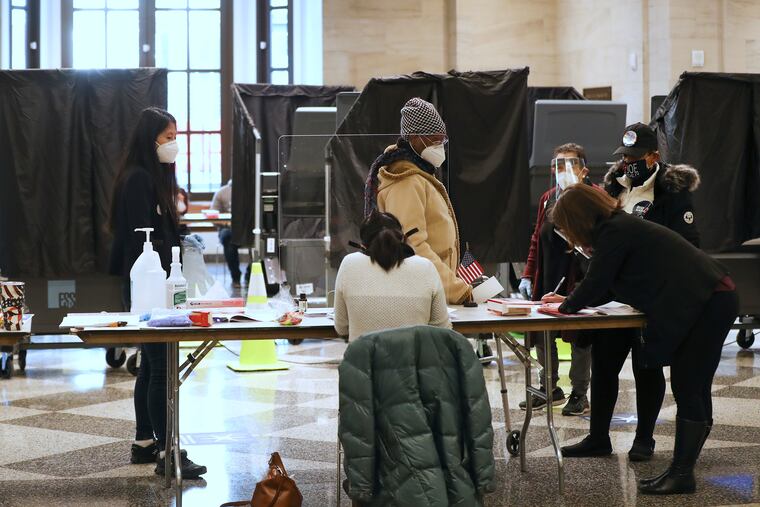3 things to know about how Pennsylvania voters break down by age
An analysis of voter registration data suggests a greater symmetry between the parties across age groups than some might expect.

More and more Pennsylvanians are registering to vote ahead of next month’s midterm elections. They join a swing-state electorate that’s older than the national average and fairly evenly divided by party.
While Pennsylvania Republicans skew older than Democrats, an Inquirer analysis of two years of voter registration data suggests the parties are more similar across age groups than some might expect.
Here are three things we learned.
GO DEEPER: Pa. Republicans are gaining on Democrats in registered voters. We look at what that really means.
Since Roe v. Wade was overturned, new voters have been younger for both parties
Newly-registered voters tend to skew younger for obvious reasons: Many are just coming of voting age, or are new to the state for college or a job.
That’s been particularly true in the run-up to the midterms, especially after the June Supreme Court decision that overturned the constitutional right to abortion access.
Since the beginning of 2022, the median age of a new registered voter has dropped from 34 to 28. That’s been a common trend just before elections, when more young people register to vote.
That shift hasn’t just happened among Democrats. For one thing, the Democratic proportion of new voters increased only slightly. And while new Republicans skew slightly older than new Democrats, Republicans are also attracting younger new voters than before.
Party-switchers going in both directions have similar age profiles
Democrats’ voter registration advantage has been shrinking for years. That’s partly because far more Democrats have re-registered as Republicans than vice-versa.
But party-switching tends to be a lagging indicator of political support, with people eventually changing their registration to reflect how they have already been voting.
Someone who registered as a Democrat decades ago but voted for Donald Trump twice, for example, might only get around to changing their party affiliation years later.
But even though older voters lean Republican, people switching their party affiliation from Democrat to Republican aren’t much older than those going the other way. Both groups have a median age in the mid-50s, with similar shares of younger and older voters switching sides.
Republicans have their strongest advantage among middle-aged voters
Pennsylvania’s electorate is older. Not only is the median Pennsylvanian three years older than the median American, but the median Pennsylvania voter is 52. That means that half of registered voters are older than that. And while voters are fairly evenly divided by age group, the largest group is those in their late 50s and early 60s.
That’s the group that most heavily identifies as Republican.
Overall, Pennsylvania’s electorate is fairly evenly split between the parties, with just over 4 million registered Democrats, compared to 3.5 million Republicans and 1.3 million independents and third-party members.
But only among the middle-aged — those voters aged 45 through 65 — do Republicans outnumber Democrats. Democrats enjoy registration advantages among older and younger voters.
The youngest voters are not so much monolithically Democratic as they are averse to identifying as Republican: Many are registered with other parties or none at all.
About the analysis
New voters are those who appear on a voter roll for the first time. Party switchers are those who are listed with a different party now from the previous comparison roll; people who switch repeatedly will not have those intermediate changes captured.
We calculated voters’ ages based on the time the voter roll was generated: For example, a person born on January 1, 1950 would be considered 61 in the December 2021 voter roll, but 62 in the January 2022 roll.
Not all voters have valid birthdates: some are redacted by court order and some dates are clearly wrong. Those voters were excluded from the analysis.